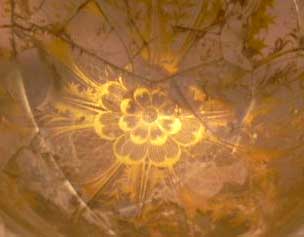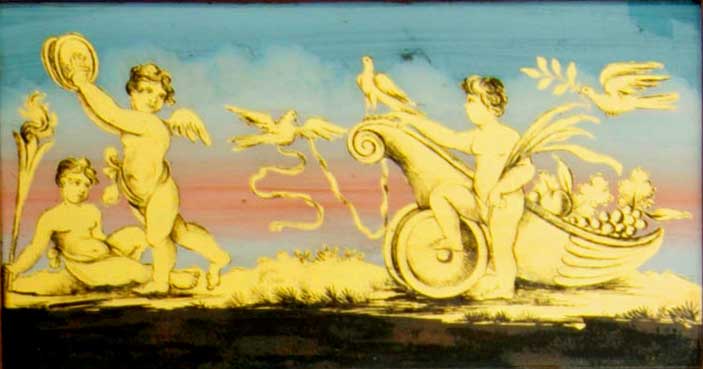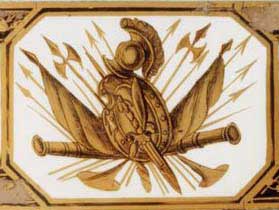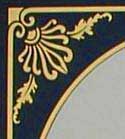|
Verre Eglomise is named after Jean-Baptist Glomy, a French 18th Century frame maker to Louis XVI, who used
the technique extensively to embellish
framed prints and to decorate mirrors and trumeaux for Marie-Antoinette.
Although
some of the finest work was carried out
in the 18th and 19th centuries, it is much older, with early examples of Eglomise glass decorated bowls from a tomb in Italy,
dating from the third century B.C.
Eglomise glass is: gold leaf; silver leaf;
paint, on its own or in combination, applied
to the underside of a sheet of glass.
At its simplest a single or double line of gold leaf was laid on the glass, protected
by a layer of black paint this technique is still employed today
in framing for traditional prints.
At its most intricate complicated
and elaborate designs can be achieved.

3rd centuary BC Antique eglomise bowl in
The British Museum

Eglomise panel late 18th Century

Eglomise panel late 18th Century

Picture frame corner detail |

